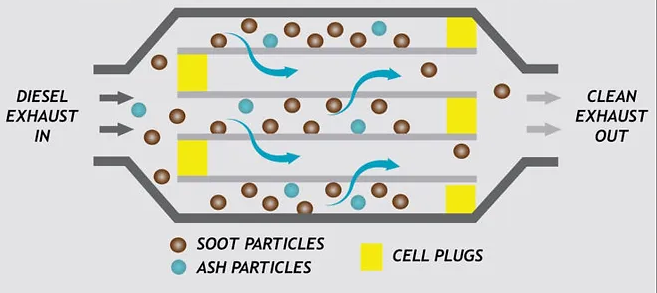DPF Maintenance
How a Diesel Particulate Filter works?

-
Treat the problem, not the symptoms
A typical DPF is constructed so that the exhaust gases enter a cell, which is plugged at the far end. The gasses are able to escape through the sidewall of these cells, leaving behind solid particulate matter in the form of residual soot and ash.
Through the regeneration process the soot is regularly burnt off and turned into ash. Over time these ash levels build up and eventually (typically over 60K – 80k miles+) the filter becomes blocked.
Some filters can become blocked much sooner if regeneration fails and ash bridging occurs, blocking off the cells prematurely.
The only way to clear the ash (and any excess soot that cannot be burnt off through regeneration) is to remove the DPF from the vehicle and clean the DPF cells in the opposite way to the exhaust flow.
DPF MAINTENANCE
Passive Regeneration
Active Regeneration
Assisted Regeneration
Forced Regeneration
Professional Diagnosis
Soot -v- Ash
Owner Beware
Garage Tip
Owner Action
OFF VEHICLE CLEANING
Professional Solutions
Cleaning Process
Garage Tips
Cleaning Success
Garage Beware
Replacement DPF
